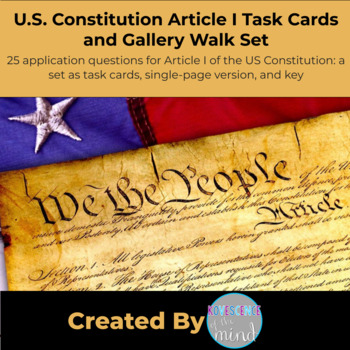The Best 9 of 2019
2019 has come to a close, and I know that I always take time at the end of the year to look back on the best of the year. What was the best use of my time? What was the best family event? What are the big take-aways that I want to always remember? I want to take today to share with you the top 9 teaching items from 2019. These are the best of the best.
This post contains affiliate links, and I will be compensated by the company at no cost to you if you purchase through my links.
#1: Budget Unit
I have used a budget in classes from seventh-grade social studies to senior economics classes to post-AP Government weeks. This is one of my favorite units to teach because it has such a real-world application. Students select a job and research all the different costs associated with adulting.
When I first started using this unit, I was teaching middle school social studies and had to teach some personal finance standards at the beginning level. My students had no idea how expensive things were. The next time I used this unit was for my juniors during civics and econ courses that were required for graduation. The timing of this course made research on the costs of housing and insurance engaging. Then I was able to use this budget unit between the AP Government exam and the end of the year to fill some time with my non-seniors who were still in school. They really enjoyed researching automobiles and the information on loans.
I am now using this unit with my College and Career Readiness class to fill time between test prep and the end of the term. It allows students to look at several job options and see their earning power.
~~~~~~~~~~
#2: The Red Badge of Courage
Historical fiction is always my favorite regardless of when the story takes place. For eighth grade in all the schools, I have taught the social studies curriculum is American history through Reconstruction. Because I have had the privilege of teaching both English and history, I would do whatever I could to tie the courses together: neither occurs in a vacuum.
Enter The Red Badge of Courage...this coming-of-age Civil War novel is the perfect pairing for U.S. history and English. The other advantage of teaching novels tied to the social studies or science curriculum of the grade level is that less time can be spent framing the context of the text. Because my students were working through a solid curriculum on the Civil War, I was able to spend more time delving into the novel, its character development, and the choices Stephen Crane made as a writer.
This entire unit includes vocabulary, reading questions, a review game, and a full test with the answer key to help you jump start your unit with the classic American novel.
~~~~~~~~~~
#3: Peer Revision and Editing Checklist
Students need to be able to look at their own writing with a critical eye because they will probably have to write something and won't always have an English teacher there to help them. I teach this skill through specific peer revision checklists.
For many years when I first started teaching, I would have students read and leave comments on another's paper without much direction. My newbie self didn't realize that not only did students not know what to leave, but they did not even know what to make comments on. This checklist was developed over many years working with students from 7th grade to seniors, and they all have been able to be successful in using it to improve their critical reading and writing skills.
This checklist asks for times (something I found very important to make sure the students actually took the time to read the writing). In addition, each body paragraph, the introduction, and conclusions all have a specific set of questions to answer. There are also specific editing directions and overall impression questions.
~~~~~~~~~~
#4: Treasure Island
Treasure Island is probably one of my favorite units to teach. I am not sure if it is because I love getting students emersed in a different time and culture or if it is because I adore The Pirates of the Carribean (both ride and movie). It has always been one of my most interactive units.
While the language of the book can be a bit challenging for students because it was written in 1881, with group reading, literature circles, or an audiobook the story is very approachable with lots of action and mystery. During this unit we study famous pirates, learn the parts of a sailing ship, and even have a pirate-themed party complete with costumes, food, and games. The Disney movie Treasure Planet is the perfect pairing for this text, but The Muppet's Treasure Island is a close second.
I encourage you to take a look at Treasure Island as a unit to add to your curriculum.
~~~~~~~~~~
#5: Daily Geography
Over the last 16 years of my teaching career I have tried a lot of different social studies warm-ups, but I never really found something that worked well to provide important content and skills. Too many students have come into my class thinking that Africa is a country and not a continent; too many students left my class early in my career without basic understanding of how our world is physically mapped out.
To combat a resource problem and a lack of knowledge and skills in my students I developed a 10-month geography bell-ringer program. Each week students in my classes from 7th grade world studies to seniors in Advanced Placement government practice research skills, using an atlas, and gain knowledge about the world in which they live. My students now use our classroom set of Chromebooks to work through answers together each day, but before that blessing in my classroom, we used a table group set of atlases in combination with their textbook and maps I projected.
~~~~~~~~~~
#6: The Canterbury Tales
I have very fond memories of studying these racy stories in my own senior English class in high school, so I have always loved finding them in the curriculum at each school where I have taught. The classic literature, poetic style, and engaging topics create a hot-bed of learning in my classroom.
My students usually study the same five tales: The Knight's, The Wife of Bath's, The Miller's, The Nun's Priest's, and The Pardoner's. Each of these tales has its own fun and uses either reading questions or quiz. It really is like teaching a set of short stories. Once we have looked at the prologue of characters and each of these five tales, we end the unit trying our hands at writing our own tale for several of our high school classmates, imitating Chaucer's style. Finally, I round this unit out with a viewing of The Knight's Tale.
~~~~~~~~~~
#7: West Side Story
Are there any schools left in the U.S. that leave Romeo and Juliet out of their curriculum? I never loved that Shakespeare play, but I did find West Side Story to a very engaging version. I have used both the script to read, but I have also shown the movie after Romeo and Juliet instead of using one of the classic versions. Now, not everyone loves the singing and dancing, but the fight scenes are amazing!
There is something about the modern drama that engages students. The language of Romeo and Juliet can be off-putting (I have found that the Folger Shakespeare Library's Lessons help tremendously), but this modern, musical spin on Shakespeare does make a big impact on students. There is so much fun in recreating the "rumble" scene in your classroom and comparing the "balcony" scenes. Using this modern version side-by-sid with the original can really push students to think about author's craft.
~~~~~~~~~~
#8: The US Consitution Article I
Constitution Day is September 17th, and Michigan law (I'm not sure about anywhere else) says social studies teachers have to take time to teach it. I would take the time anyway because so many people are uneducated about our Consitution (just look at social media to see what I mean). I have a dual-purpose (I change it up depending on the class) review of Article I, the legislative branch, that I use to engage students every fall.
My classroom is set up in table groups, so teaming them up is easy. Depending on their level of background knowledge I may give them technology or just a copy of Article I. In some classes I print this as a set of questions to post around my room to add movement and other times I print them as task cards for table work. Students then work through solving a series of problems relating to Article I.
Would you like to see something similar for the other articles and amendments?
~~~~~~~~~~
#9: Design and Build a Game Board
Some schools I have worked in require final exams in all classes, some have only required exams in core classes, and at one it was up to each teacher to decide. When I am given a choice, I always opt for a final project for my students to demonstrate their term-long learning.
I developed a team-based project final that I can use with any class. I have used it with civics, economics, psychology, world geography, and women's studies. The unit takes students through designing and marketing a game based on the course. I love that I can tailor the topic to a specific unit or give them the freedom to use anything in a course. If my budget allows, I even purchase blank game boards for the teams to use. Now, I have to check in with students regularly through the process to be sure work is getting done and that nobody is doing most of the work while others don't do anything, but the final review day where they play each other's games is always a ton of fun.
~~~~~~~~~~
Thank you for sticking around to the end of my 2019 highlights. Do you have a favorite lesson in 2019? If so, share it below.
Happy New Year!


































